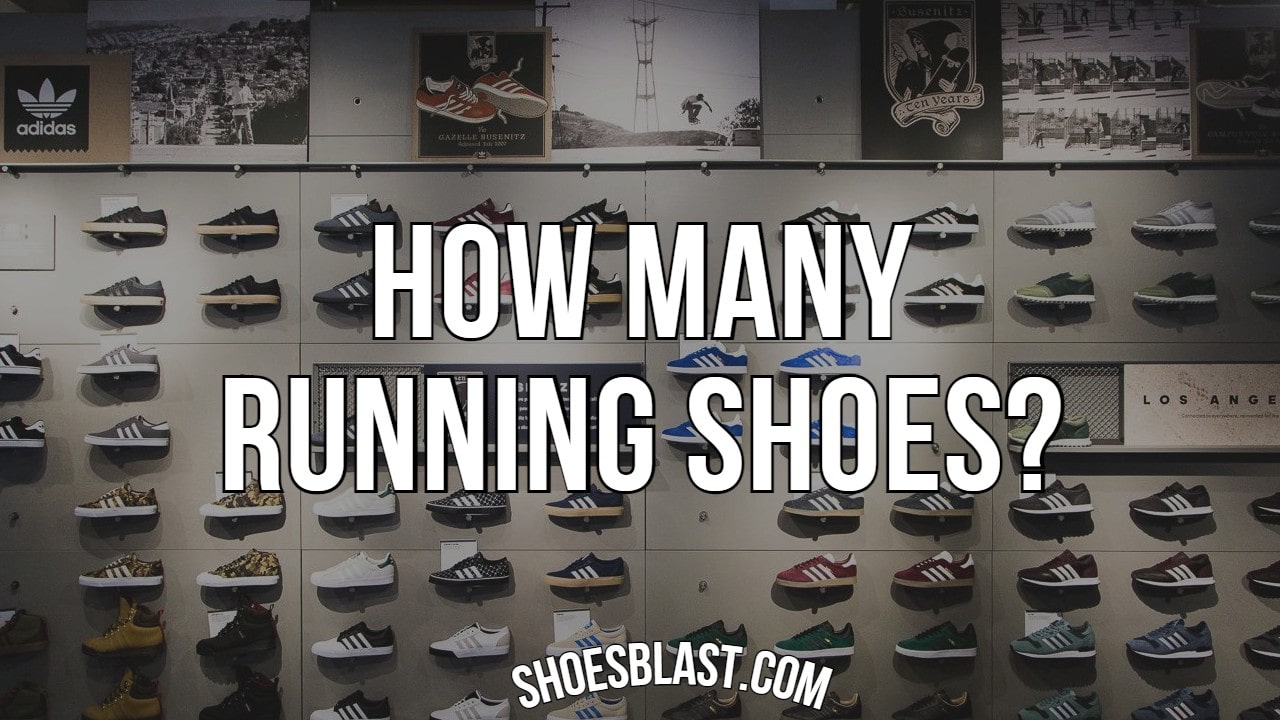Less Running = fewer shoes | More Running = More Shoes | More than running? | Should you rotate the shoes?
You just got into running and you hear your running group talking about all these different types of shoes. You have no idea what they are talking about, why so many pairs of shoes, and what’s the difference between them. If this scenario didn’t happen to you, well, it happened to me.
In my first years of running, I thought that a pair of running shoes is plenty enough. Not only do I wear only one pair for 300+ km of running per week but I also used it until it became a zero-drop shoe, almost running barefoot.
The sad part was that I never linked my injuries and fatigue to it. I was young, and Google didn’t have all the answers back then. But years have passed, and I start learning, researching, exploring new types of shoes, and experimenting with them. From all my experience, this is the information I’ve gathered.
1. Less running = Less shoes
If you run only 2 to 4 days a week it is safe to say that you are good with one pair of shoes. Considering that you don’t wear the same pair of running shoes for other activities.
Running shoes have that cushioning to absorb the force of the impact. It takes up to 24h for the cushioning to bounce back. If you run every other day, your shoes have time to regain back their shape.
So, you need only one pair of running shoes if:
- You run less than 4 days a week;
- You don’t use your running shoes for other activities (walking, cross-training; etc.)
2. More running = more shoes
If you run more than 4 days a week, you’ll most likely need two pairs of shoes. As mentioned above, in order to absorb the impact during your run, the cushioning needs time to bounce back. If you run every day, it is recommended to use two different pairs of shoes.
This process is usually described as “running shoe rotation”. Meaning that you’ll run in a different pair of shoes every other day. The reason for having more than one pair of shoes is more than just because of its cushioning.
- Running is a repetitive movement. Every step uses the same muscles, bones, and ligaments. Using in the same pair of shoes will put stress on the same muscles every time you run, which can increase the risk of injuries. By rotating your shoes you’ll allow other muscles and joints to be used. This will decrease the possibility of overusing and working some specific muscles more than others.
- Running has different speeds. If you are a veteran when it comes to running you already know that in order to work your cardiovascular system and increase your aerobic fitness, you need to do different types of running. Faster workouts; longer runs; recovery runs; competition. Each of these four categories most likely requires a different type of shoes. If you are a competitive runner, you might consider having a pair for racing, one for faster workouts, and one for regular runs, but as an amateur runner, you can use two pairs, at most three pairs.
- Running on different terrain. If you like running on trails, but also on the road, it might be a good idea to have a pair of trail shoes and a pair of road running shoes. The trail shoes are usually heavier, with stiffer midsoles that are more stable for uneven surfaces and rocks. Mostly for protection. The road shoes are lighter, with more cushioning, and usually designed to correct your posture.
3. More than just running = more pairs of shoes.
If you are an active person who does more than just running (gym, yoga, hiking, mountain biking, or any other activities), you definitely need more than only one pair of shoes.
Each pair of shoes are designed to improve the performance and comfort of that specific activity. Consider getting a separate pair of shoes for all the other activities you are practicing.
Should you rotate the same style of shoes or a different type?
When we buy a pair of running shoes, we look at a style that accommodates our needs. You might take into consideration your running form, foot strike, surface, and lastly, personal preference.
If you had a pair of running shoes that kept you injury-free for a long time, I recommend rotating with the same shoe style. If you experience any pain or small injuries, it would be a good idea to try rotating with different styles or brands.
As mentioned above, every shoe structure puts different muscles under stress. By changing the style of shoes you are running in, you are involuntarily working different types of muscles. It is beneficial for you to use other muscles. One, because it evens out the workload to all the muscles, and two, because it doesn’t overwork the same muscles (making it more prone to injury).
What if your favorite running shoes have been discontinued?
Unfortunately, this is a scenario that happens very often. You finally found the perfect pair of shoes. A few years later you find out that your model has been updated. The new features are not to your liking. You are frustrated, but there is nothing you could do, except go with the updated model or look for a new pair of shoes.
Why do brands keep updating their shoes?
There are a few reasons why brands continue to change their products.
- New technology. The development and distribution of running shoes is a very competitive industry. This inspires big brands (Nike, New Balance, etc.) to further develop and improve their running shoe designs. Features that updated models may offer include lighter weight, increased comfortability, and improved durability. These showcase key selling points representative of the brands selling them.
- Customer feedback. These big brands that we discussed above put a lot of resources into costumer’s feedback. If the suggestions could potentially increase their sales, the manufactories will definitely take into consideration making “the updates”.
- Current trends. Popular colors and materials are part of their marketing. The personal preference aspect tends to be biased towards “what’s in trend” at the moment.
To summarize how many running shoes should one have, if you are running more than 4 times a week, you should consider having two pairs of shoes. Rotate your shoes any other day. Before buying your shoes, go to a shoe store and get fitted. You want to make sure you wear a pair of shoes that accommodates your running form and stride.

Hi there, my name is Petronela, and I am professional runner training in the United States but competing for Romania. I fell in love with running at the age of 14 when a stranger put around my neck a very shiny $3 dollar silver medal. Fourteen years later and I still get the same goosebumps when I win a medal.
The reason I am running is a true passion like it was when I was 14, the only difference is that small pressure to maintain the status of a professional runner, win races, and hit the times. That requires commitment, hard work, healthy choices, sacrifice, and many good pairs of running shoes. In my running career, I wore more than 1000 pairs of shoes, and my poor feet had the challenge to get used to them as many times.
I have a Master in Public Health Education and Promotion, a 4:34 indoor mile PR, a 4:13m 1500m PR, and 2:05 in the 800m. I run around 70 miles per week, and I am mentally preparing to run a 5k soon. The shoes I run in are one of the most important parts of the training process.
Nowadays, experts have developed amazing shoes that significantly impact and improve people’s athletic performances and because they are available to everyone for purchase, it is important to know which one is the best pair the shoes for you, to achieve your specific goal. That is why I am here. To share with you a little bit of my knowledge and expertise about shoes.
I hope you enjoy it!

